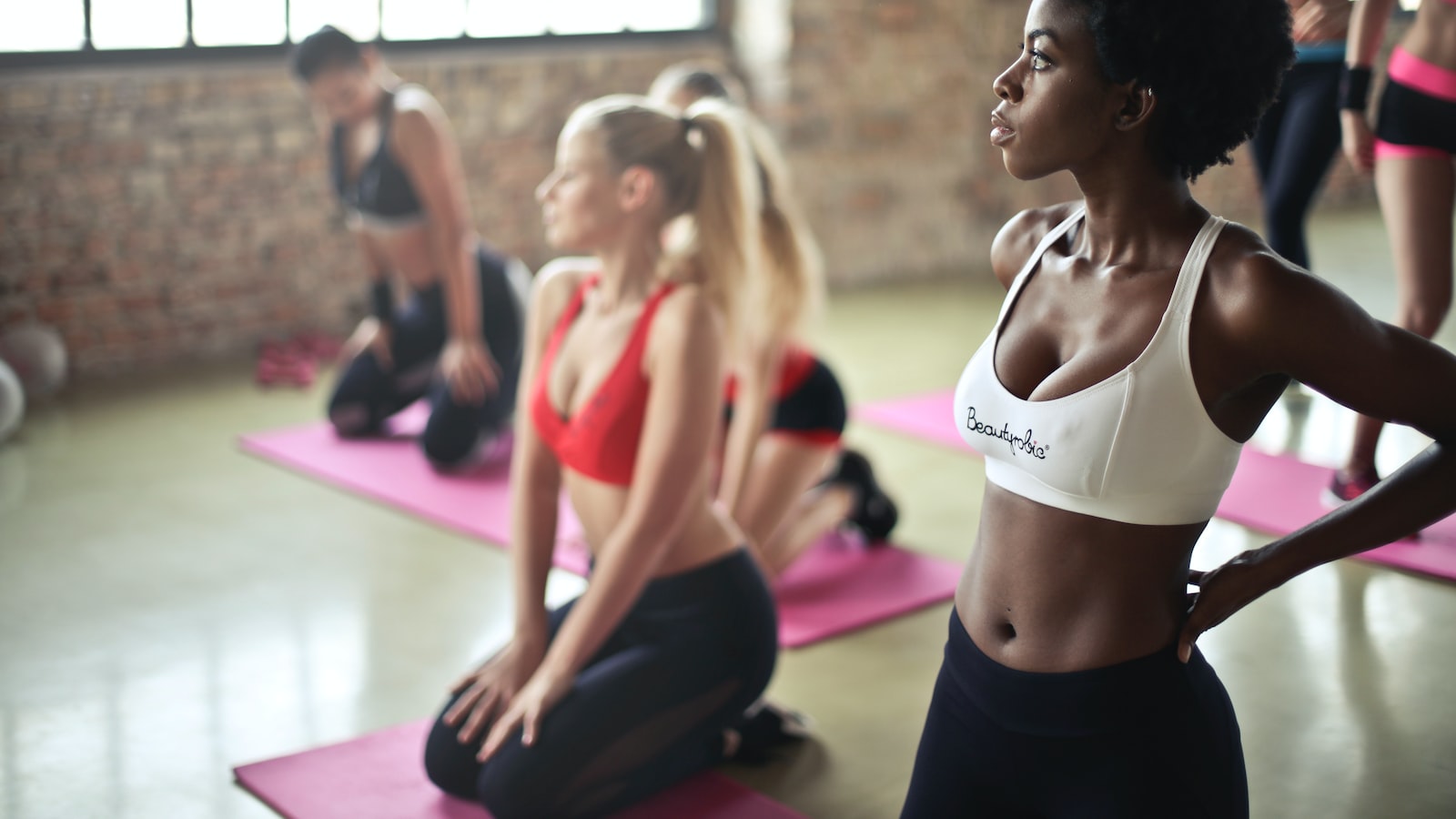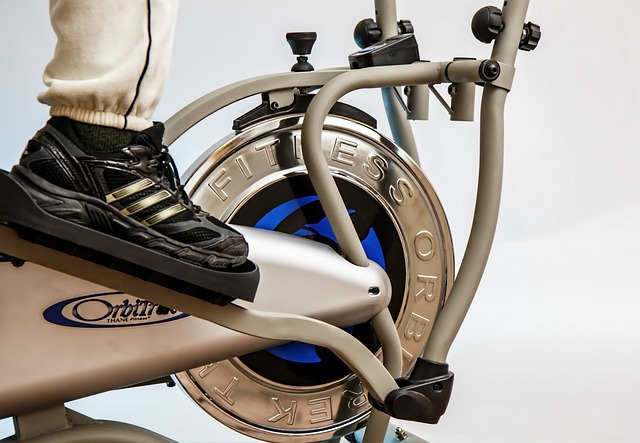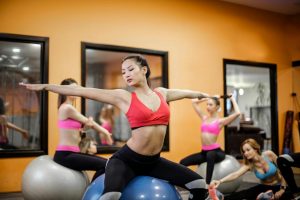
Fitness Basics: How Many Components Are There?
Do you want to get in shape but don’t know where to start? If you’re feeling a bit overwhelmed at the thought of beginning a regular fitness routine, you’re not alone! Luckily, there are only three components of fitness that you need to know in order to start your journey toward better health. In this article, we’ll discuss the basics of fitness and how many components are necessary to commit to for a complete routine.
List of Content
- 1. What is Fitness?
- 2. What are the Components of Fitness?
- 3. Why is it Important to Understand Fitness Components?
- 4. Examples of the Physical Components of Fitness
- 5. Examples of the Mental Components of Fitness
- 6. Advancing your Fitness Knowledge
- You Ask, I answer

1. What is Fitness?
Fitness is a term used to describe the process of improving our physical health and wellbeing. It involves establishing a proper diet, exercise routine, and engaging in activities that promote a healthier lifestyle. Fitness can involve anything from running, lifting weights, swimming, or participating in team sports.
For those who want to get and stay fit, diet is important. Eating a balanced diet full of fruits, vegetables, and lean proteins can provide our bodies with the energy and nutrients they need to function well. Additionally, eating smaller portions throughout the day is important and helps to keep us energized.
Exercise also plays an important role in keeping us fit. It’s important to find an exercise routine that works for us and that we enjoy. This can involve anything from going to the gym, participating in team sports, biking, hiking, or any other physical activity that gets our heart rate up.
Finally, fitness involves other elements that help us stay healthy and balanced. It’s important to be mindful of how much rest we’re getting, how we’re managing stress, and act in ways that promote emotional health such as spending time with friends and family.
- Eating a balanced diet is essential for fitness.
- Find an exercise routine that works for you and that you enjoy.
- Be mindful of how much rest you get.
- Engage in activities that promote emotional health.

2. What are the Components of Fitness?
When it comes to physical activity, many people don’t know what “fitness” truly means. Fitness involves multiple components, and failing to understand them can lead to an ineffective exercise program. To really make the most out of your time in the gym, here are the various components of fitness.
Aerobic Fitness: Also known as cardio, this type of fitness involves activities that get your heart rate up and consistently keep it up for a longer period of time. Examples include running, walking, and swimming.
Muscular Strength: This is the type of fitness developed with weightlifting. It is your body’s ability to use force in a single effort. Weightlifting can be done with free weights, such as dumbbells and barbells, as well as with machines.
Muscular Endurance: This type of fitness is different from muscular strength because it focuses on the amount of repetitions that can be done versus the amount of force that can be used at one time. Push-ups, pull-ups, and burpees are all examples of activities that focus on muscular endurance.
These are the three primary components of fitness. Depending on your goal, there are other things to consider as well, such as posture, flexibility, balance, power, or even speed. It’s important to recognize that every type of fitness requires a specific type of exercise and routine. In order for any program to be effective, you must consider your goals, and plan the best approach to achieve them.
3. Why is it Important to Understand Fitness Components?
Physical fitness has far-reaching benefits and importance to our overall wellbeing, which is why understanding the components of fitness is essential. This knowledge can help us make informed decisions about the types of activities and exercises that best fit our goals and needs. Here are just a few of the reasons why understanding fitness components is essential:
- Improve overall function and health – Learning and understanding fitness components can help increase overall physical health and function, as well as reduce risk of injury. Understanding the basics of fitness can help individuals set reasonable, attainable goals, know what foods to eat to support their goals, and how to properly and safely work out.
- Boost confidence – When a person feels better about themselves through physical health, they typically build up self-confidence. The more an individual understands about fitness, the more confidence they gain as they see their body and mind improve.
- Increase energy levels – Regular exercise, as well as healthy eating can increase energy levels and improve overall physical and mental health. Understanding the components of physical fitness helps individuals make educated decisions on the type and amount of exercise needed to support their fitness goals.
- Gain core strength – Core strength is defined as the partnership between the pelvis, spine, and shoulder girdle. Knowing and understanding fitness components helps people target major muscle groups, boosting overall stability and balance. This can also help individuals to better protect themselves from injury.
When it comes to physical fitness and reaching individual goals, having an understanding of the components of fitness can be extremely beneficial. This understanding allows for more effective, targeted exercise plans and also helps to limit individuals from reaching plateaus or getting into a fitness rut. Following set schedules and plans allows people to change up their routines and keep themselves in the best condition to reach their desired goals.
We have outlined several essential reasons why having a good understanding of fitness components is essential. However, it’s important to remember that learning about fitness goes beyond merely studying components. Understanding proper techniques and routines is important as well! Knowing how to correctly do movements and exercises, with proper form and intensity, is key to preventing injury and improving overall physical health.
4. Examples of the Physical Components of Fitness
Cardiovascular Endurance is the ability of your body to deliver oxygen and nutrients to cells and to remove waste over extended periods of time. It is developed by doing activities that increase your breathing and heart rate such as running, swimming, cycling, and calisthenics. Having strong cardiovascular endurance can improve energy levels, reduce stress, and reduce the risk of heart disease.
Muscular Strength is the ability of your muscles to generate force and lift weight. It can be improved by activities such as lifting weights or through bodyweight exercises like push-ups, pull-ups, and squats. Having strong muscles can improve everyday functional tasks, provide stability to the body, and promote injury prevention.
Muscular Endurance is the ability of your muscles to repeatedly exert force for extended periods of time. It can be improved by activities such as weightlifting and running overall distance. Having strong muscular endurance can improve your athletic performance, reduce the risk of muscles injuries, and keep your core strong.
Flexibility is the ability to move your joints and muscles through a full range of motion. It can be improved by performing activities such as stretching, yoga, and Pilates. Incorporating flexibility into your routine has many benefits such as improving posture, reduce aches and pains, and prevent injury.
5. Examples of the Mental Components of Fitness
Being mentally fit is just as important as being physically fit. The mental components of fitness cover various aspects of our cognitive functioning and one’s overall mental well-being. Here are some of the most important mental components of fitness and examples of how you can develop them.
1. Self-regard: Self-regard includes how you view yourself and how your esteem and self-confidence affects your life. To increase your self-regard, try activities such as:
- Writing down your accomplishments
- Eliminating negative self-talk
- Making a list of your positive qualities
- Celebrating success
2. Decision-making: Making good decisions allows us to meet our goals, both short-term and long-term. Boosting your decision-making skills involves understanding and weighing various options, while considering the consequences of each. The following can help improve decision-making:
- Considering both the pros and cons of each option
- Assessing risk and reward
- Learning from the mistakes of others
- Researching possible consequences
3. Flexibility: Being able to adjust quickly to changing circumstances can help in all aspects of life. To develop more flexibility, try the following:
- Staying open-minded about alternatives
- Considering effort vs. outcome
- Accepting that not everything goes as planned
- Practicing patience
4. Stress Management: Learn to effectively cope with everyday stress. This can help improve both physical and mental health. To manage stress, you can practice the following:
- Exercising regularly
- Practicing deep breathing
- Meditating and mindfulness
- Engaging in calming activities
6. Advancing your Fitness Knowledge
Once you’ve started on your fitness journey it is important to continue learning more skills and information about staying in shape. The more knowledge you acquire, the easier it is to monitor and optimize your performance. Here are 6 things you can do to advance your fitness knowledge:
- Read fitness magazines. Dedicate 15 minutes to a day to do some recreational reading. Not only is it informative, it can also be entertaining. Fitness magazines often come with lots of photos illustrations, making it easy to remember the tips and tricks you’ve learned.
- Follow fitness influencers on social media. Social media is a great way to learn new information quickly as many personal trainers and influencers are constantly sharing free information for their followers. It can be a really fun way to stay informed.
- Sign up for newsletters. Subscribing to newsletters from health and fitness authors can give you great tips and tricks tailored to your goals and needs. Plus, having an email full of informative content is a great reminder for you to stay active.
- Take classes at the gym. Joining a class at the gym can be a great way to learn the fundamentals, advanced techniques and stay motivated. Your trainer will also be able to provide great advice for reaching the levels of fitness you desire.
Growing your knowledge is necessary in order to excel in whatever activity you choose. Research the things you are interested in and stay motivated to learn more every day and you are sure to meet your goals.
Finally, don’t forget to reward yourself for your hard work and progress. Taking a break every now and then, and rewarding yourself for hitting goals will help you stay motivated, energized and ready to keep learning.
You Ask, I answer
Q: What are the main components of fitness?
A: Generally speaking, there are five main components of physical fitness: cardiovascular endurance, muscular strength, muscular endurance, flexibility, and body composition.
Q: What does cardiovascular endurance involve?
A: Cardiovascular endurance focuses on aerobic activities, which involve sustained, rhythmic movements of the large muscle groups. Examples of activities that work on cardiovascular endurance include running, cycling, swimming, and walking.
Q: What is muscular strength?
A: Muscular strength is the ability of a muscle to exert maximum force against resistance. It usually involves activities such as weightlifting and isometric exercises.
Q: What is muscular endurance?
A: Muscular endurance is the ability of a muscle to perform repeated contractions over a period of time. This type of training uses lighter weights and higher reps, and can include activities such as push-ups and squats.
Q: What is flexibility?
A: Flexibility is the ability of a joint to move through its full range of motion. It can be improved by performing dynamic stretches and stationary poses (like yoga and Pilates).
Q: What is body composition?
A: Body composition is a measure of fat mass compared to lean muscle mass. It is important for overall health because having too much fat can increase the risk of health conditions, such as heart disease and diabetes.
Fitness is a complex and important factor in physical health. Remember that there are many different components that can help you reach your fitness goals. Understanding the basics of these components can help you design a safe and effective workout plan that is suitable for your own individual needs. Working with a professional can also help you ensure you are getting the most out of your workouts. With the right approach, you can start to make significant changes to your fitness level and overall health.

